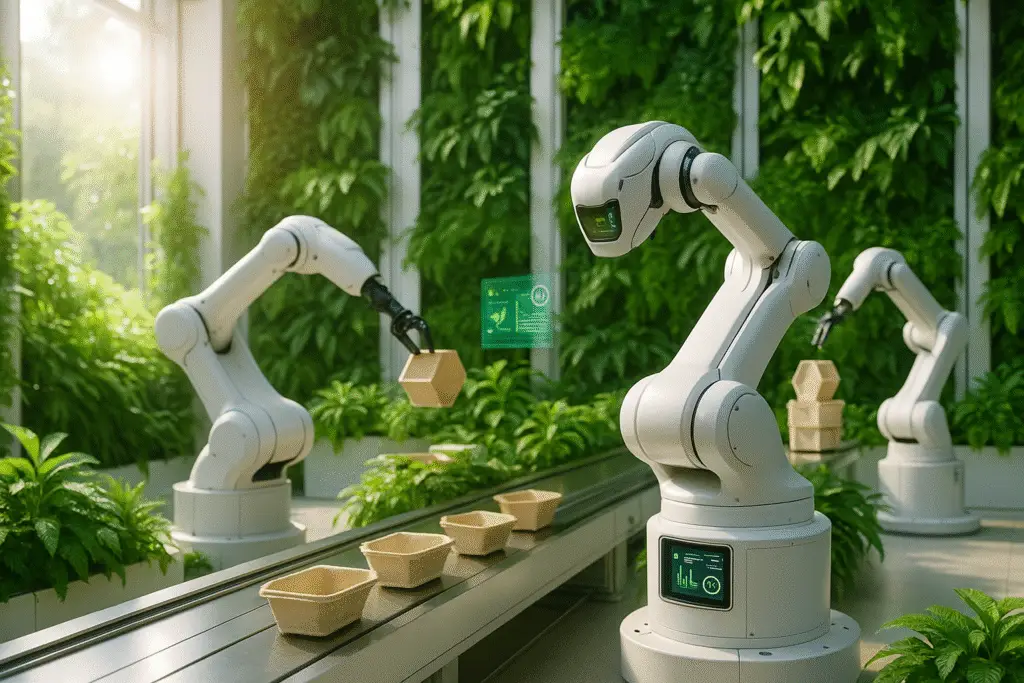Industrial Automation Robotics: Revolutionising Manufacturing for the Future
In today’s rapidly advancing technological world, industrial automation robotics has emerged as a game changer for industries worldwide. From automotive assembly lines to food packaging units, robots are transforming the way companies carry out production. In this article, we will explore what industrial automation robotics is, its history, benefits, challenges, applications, and the future it holds for global industries. What is Industrial Automation Robotics? Industrial automation robotics refers to the use of robotic systems and automated machinery to perform tasks traditionally handled by human workers in industrial settings. These robots are designed to carry out repetitive, precise, and sometimes dangerous tasks with high speed, accuracy, and reliability. They’re programmed to operate independently or alongside human workers—ultimately enhancing productivity and safety across manufacturing units. A Brief History of Industrial Robotics t all started in the 1950s: George Devol’s invention of Unimate, the first programmable robot, launched the industrial robotics revolution By the 1960s, General Motors adopted Unimate for their assembly lines, marking the beginning of robotic automation in manufacturing. Over the decades, with advancements in microprocessors, AI, and sensor technologies, industrial robots have evolved into highly sophisticated machines capable of learning, adapting, and working collaboratively with humans. Types of Industrial Automation Robots There are various types of industrial robots, each designed for specific tasks: 1. Articulated Robots: These are the most common robots with rotary joints, widely used for welding, painting, and assembly. 2. SCARA Robots: Engineered for efficiency, SCARA robots dominate pick-and-place automation—leveraging unmatched speed, flexibility, and repeatability (<0.1mm precision) 3. Cartesian Robots: Commonly called gantry robots, these systems leverage three-axis linear motion (X, Y, Z)—enabling high-accuracy workflows in CNC machinery and large-scale 3D printing. 4. Delta Robots: Lightweight robots used for high-speed picking and packaging applications. 5. Collaborative Robots (Cobots): Cobots are designed to work safely alongside humans, assisting in assembly, packaging, and quality inspection tasks. Key Benefits of Industrial Automation Robotics Industrial automation robotics offers several benefits to industries across sectors: Applications of Industrial Automation Robotics Today, industrial robots actively transform manufacturing processes including: 1. Welding Consequently, robotic welding achieves reliable weld quality and safety gains—most notably in auto production, where precision impacts margins. 2. Assembly Robots assemble complex components swiftly and accurately, improving product standards. 3. Material Handling From packaging to palletising, robots manage heavy materials efficiently. 4. Painting Robots provide uniform painting with minimal wastage, crucial in automobile and furniture manufacturing. 5. Quality Inspection Robotic vision systems detect defects that are often missed by human eyes, ensuring high-quality output. Impact on Workforce and Job Opportunities A common misconception is that robotics eliminates jobs. In practice, automation robotics drives job transformation—specifically opening high-value opportunities for upskilled professionals. Industries now require robotics engineers, programmers, maintenance technicians, AI experts, and system integrators to design, operate, and manage robotic systems. Upskilling and reskilling programs are essential to prepare the workforce for this technological shift. Challenges in Implementing Industrial Automation Robotics Despite the advantages, industries encounter several hurdles in the adoption of robotics. Future Trends in Industrial Automation Robotics The future of industrial robotics is promising with emerging trends such as: 1. AI and Machine Learning Integration Robots will become smarter with AI, enabling them to make real-time decisions and adapt to changing environments. 2. IoT Connectivity Internet of Things (IoT) will connect robots with production systems for seamless data exchange and remote monitoring. 3. Human-Robot Collaboration Cobots will continue to evolve, making collaboration safer and more efficient in complex tasks. 4. 5G Technology With ultra-fast 5G networks, robots will communicate faster, enhancing automation in real-time applications. 5. Sustainable Robotics Future robots will focus on energy efficiency and environmentally friendly operations, contributing to green manufacturing goals. Top Companies Leading Industrial Automation Robotics Some of the leading global companies in the robotics industry are: How Small Businesses Can Adopt Industrial Automation Robotics Previously, robotics was limited to large industries; however, small and medium enterprises (SMEs) can now integrate automation to remain competitive. Moreover, affordable cobots and modular robotics systems are making automation more accessible. In addition, leasing options, government subsidies, and robotics-as-a-service models further ease adoption costs. As a result, small businesses are increasingly empowered to automate packaging, inspection, and assembly tasks effectively. Conclusion In conclusion, industrial automation robotics is transforming manufacturing by boosting productivity, enhancing safety, and improving product quality. Although it poses challenges—such as high initial costs and skill shortages—the benefits significantly outweigh the drawbacks. With the rapid advancement of technologies like AI, IoT, and smart sensors, robotics is set to play an even more pivotal role in shaping the future of global industries. Therefore, for businesses striving to stay competitive, investing in industrial automation robotics is no longer optional—it is essential for long-term growth, sustainability, and global success.

